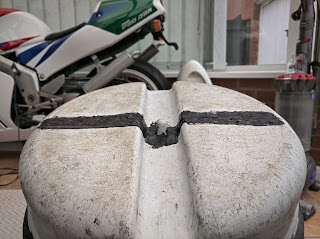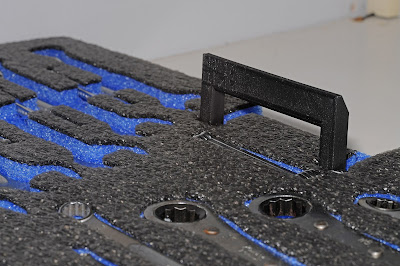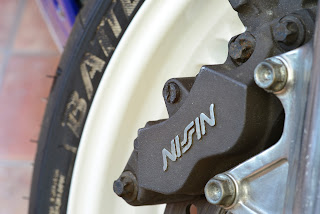Service Focus: Plastic Welding
Welding is to unite (metallic parts) by heating and allowing the metals to flow together or by hammering.
 |
| Repaired water tank fig 1.1 |
However as you can see in fig 1.1 on the right it isn't always as simple as that. When you are welding with metals, it is important that the materials you weld with match those used in the construction of what you are trying to repair and this is the same for plastics, for the most part. If you know the material which something is made of, then you can use matching welding rods to repair the damaged area so long as the material was a thermo-plastic. Likewise; the colour, if important to the customer, can be matched relatively closely too.
Sometimes the material cannot be matched for a number of reasons so an alternative is needed; Fibreflex. This welding material is a composite of plastic and fibreglass which, rather than mixing with the base material, uses its own strength to reinforce the damaged area. The added strength for Fibreflex was desirable for the repair at fig 1.1 hence its use here.
A customer had their unobtanium Subaru Legacy Bh4 Blitzen rear bumper damaged. No body shop would touch it due to missing parts and the extent of the damage on an already repaired area.
We took this one on as a bit of a challenge.
A challenge it indeed was. The bumper was made of Polypropylene which is a chemical plastic thus not plastic weldable but again, Fibreflex is there to save the day. As it sits on rather than in the base material, it is ideal for chemical plastics.
As you can see in fig 1.2a, Fibreflex was added to a cut channel in the cracks. This was then covered over again, smoothed and repeated on the other side. This was further supported on the inside with wire mesh especially on the areas where parts were missing.
Body filler, smoothing and paint came next which is well outside of what we usually do but for this rare example it was worth the effort. A body shop may one day take this to a perfect repair, for now the customer was over the moon that we saved their 1/500 bumper from the bin.
 |
| Subaru legacy Blizen bumper fig 1.2b |
 |
| Volvo boost pipe fig 1.3a |
This pipe had caused the owners Volvo V50 D5 to go into limp mode when it split at the turbo end.
 |
| Volvo boost pipe fig 1.3b |
This pipe has a steel collar on the inside to prevent crushing but it was forcing the crack open. What we needed to do was close the crack, prevent it from propagating and add strength. Yes, yet again fibreflex was the answer. Despite PAS being a thermoplastic, it doesn't have a dedicated rod yet and that added strength from the fibreglass will do well in this high temp and stress area of the car.
A quick and cheap repair got the Volvo back on boost in no time.




Comments
Post a Comment